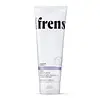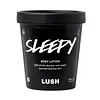What's inside
What's inside
 Key Ingredients
Key Ingredients

 Benefits
Benefits

 Concerns
Concerns

 Ingredients Side-by-side
Ingredients Side-by-side

Water
Skin ConditioningHelianthus Annuus Seed Oil
EmollientButylene Glycol
HumectantParfum
MaskingPhenoxyethanol
PreservativeHydroxypropyl Starch Phosphate
Glycerin
HumectantCarthamus Tinctorius Seed Oil
MaskingEthylhexylglycerin
Skin ConditioningMaltodextrin
AbsorbentSelaginella Lepidophylla Extract
EmollientChondrus Crispus Extract
Skin ConditioningAgave Tequilana Leaf Extract
AstringentCardiospermum Halicacabum Flower/Leaf/Vine Extract
Skin ConditioningCocos Nucifera Oil
MaskingCocos Nucifera Fruit Extract
EmollientPEG-60 Hydrogenated Castor Oil
EmulsifyingGluconolactone
Skin ConditioningLactobacillus Ferment
Skin ConditioningSodium Benzoate
MaskingPhenethyl Alcohol
MaskingArnica Montana Flower Extract
MaskingCaprylyl Glycol
EmollientPotassium Sorbate
PreservativeSodium Hyaluronate
HumectantTocopheryl Acetate
AntioxidantRosmarinus Officinalis Leaf Extract
AntimicrobialLinalool
PerfumingHexyl Cinnamal
PerfumingBenzyl Benzoate
AntimicrobialLimonene
PerfumingCoumarin
PerfumingAlpha-Isomethyl Ionone
PerfumingCitral
PerfumingLavandula Hybrida Oil
EmollientElettaria Cardamomum Seed Oil
MaskingCupressus Sempervirens Oil
MaskingFish Oil
Skin ConditioningJuniperus Communis Fruit Oil
MaskingLavandula Angustifolia Oil
MaskingMyristica Fragrans Kernel Oil
MaskingWater, Helianthus Annuus Seed Oil, Butylene Glycol, Parfum, Phenoxyethanol, Hydroxypropyl Starch Phosphate, Glycerin, Carthamus Tinctorius Seed Oil, Ethylhexylglycerin, Maltodextrin, Selaginella Lepidophylla Extract, Chondrus Crispus Extract, Agave Tequilana Leaf Extract, Cardiospermum Halicacabum Flower/Leaf/Vine Extract, Cocos Nucifera Oil, Cocos Nucifera Fruit Extract, PEG-60 Hydrogenated Castor Oil, Gluconolactone, Lactobacillus Ferment, Sodium Benzoate, Phenethyl Alcohol, Arnica Montana Flower Extract, Caprylyl Glycol, Potassium Sorbate, Sodium Hyaluronate, Tocopheryl Acetate, Rosmarinus Officinalis Leaf Extract, Linalool, Hexyl Cinnamal, Benzyl Benzoate, Limonene, Coumarin, Alpha-Isomethyl Ionone, Citral, Lavandula Hybrida Oil, Elettaria Cardamomum Seed Oil, Cupressus Sempervirens Oil, Fish Oil, Juniperus Communis Fruit Oil, Lavandula Angustifolia Oil, Myristica Fragrans Kernel Oil
Avena Sativa Kernel Extract
AbrasiveMilk
Skin ConditioningPrunus Amygdalus Dulcis Oil
Skin ConditioningLavandula Angustifolia Flower Water
Skin ConditioningLavandula Angustifolia Flower
Skin ConditioningSimmondsia Chinensis Seed Oil
EmollientGlycerin
HumectantTheobroma Cacao Seed Butter
EmollientStearic Acid
CleansingIllipe Butter
Skin ConditioningTriethanolamine
BufferingLavandula Angustifolia Oil
MaskingStyrax Benzoin Gum
MaskingDipteryx Odorata Seed Extract
MaskingViola Odorata Oil
MaskingCetearyl Alcohol
EmollientBenzyl Benzoate
AntimicrobialBenzyl Cinnamate
PerfumingCoumarin
PerfumingGeraniol
PerfumingLimonene
PerfumingLinalool
PerfumingParfum
MaskingSynthetic Fluorphlogopite
Titanium Dioxide
Cosmetic ColorantTin Oxide
AbrasiveCI 45380
Cosmetic ColorantBlue 1 Lake
Cosmetic ColorantAvena Sativa Kernel Extract, Milk, Prunus Amygdalus Dulcis Oil, Lavandula Angustifolia Flower Water, Lavandula Angustifolia Flower, Simmondsia Chinensis Seed Oil, Glycerin, Theobroma Cacao Seed Butter, Stearic Acid, Illipe Butter, Triethanolamine, Lavandula Angustifolia Oil, Styrax Benzoin Gum, Dipteryx Odorata Seed Extract, Viola Odorata Oil, Cetearyl Alcohol, Benzyl Benzoate, Benzyl Cinnamate, Coumarin, Geraniol, Limonene, Linalool, Parfum, Synthetic Fluorphlogopite, Titanium Dioxide, Tin Oxide, CI 45380, Blue 1 Lake
Ingredients Explained
These ingredients are found in both products.
Ingredients higher up in an ingredient list are typically present in a larger amount.
Benzyl Benzoate is usually created from the condensation of benzoic acid and benzyl alcohol. It is used as a preservative, solvent, and has a floral/balsamic scent in large amounts.
As a preservative, Benzyl Benzoate works against bacteria and fungus. It is often used to treat scabies and lice in medicine.
Solvents are used to keep ingredients together in a product. They can help dissolve ingredients to stable bases or help evenly distribute ingredients throughout the product.
Due to its fragrance, Benzyl Benzoate can be sensitizing and may cause contact dermatitis. It is a known EU allergen. We recommend speaking with a professional if you have any concerns.
Benzyl Benzoate can be naturally found in cranberries and peaches.
Learn more about Benzyl BenzoateCoumarins are a group of substances found naturally in plants. There are over 1300 types of coumarins identified. It has a natural vanilla scent.
Coumarin is an identified EU known allergy, meaning it may cause an allergic reaction when applied to the skin.
In many countries, coumarin is banned as a food additive. However, it can be found in soaps, tobacco products, and some alcohol drinks.
Plants use coumarins as a chemical defense. Some plants that have coumarins include lavender, tonka beans, and yellow clovers.
Learn more about CoumarinGlycerin is already naturally found in your skin. It helps moisturize and protect your skin.
A study from 2016 found glycerin to be more effective as a humectant than AHAs and hyaluronic acid.
As a humectant, it helps the skin stay hydrated by pulling moisture to your skin. The low molecular weight of glycerin allows it to pull moisture into the deeper layers of your skin.
Hydrated skin improves your skin barrier; Your skin barrier helps protect against irritants and bacteria.
Glycerin has also been found to have antimicrobial and antiviral properties. Due to these properties, glycerin is often used in wound and burn treatments.
In cosmetics, glycerin is usually derived from plants such as soybean or palm. However, it can also be sourced from animals, such as tallow or animal fat.
This ingredient is organic, colorless, odorless, and non-toxic.
Glycerin is the name for this ingredient in American English. British English uses Glycerol/Glycerine.
Learn more about GlycerinLavandula Angustifolia Oil is more commonly known as lavender essential oil. It is considered a fragrancing ingredient.
Lavender imparts a famous scent. While the smell is lovely, this ingredient and may sensitize skin in topical products. This is because about 85% of the oil is made up of linalool and linalyl acetate.
When exposed to air, these two compounds become strong allergens. This ingredient exhibits cytotoxicity at low concentrations; amounts of 0.25% have been shown to damage skin cells.
A study from Japan found this ingredient caused lavender sensitivity after widespread exposure.
Lavender essential oil has some antimicrobial, antibacterial, and anti-inflammatory properties. However, the cons of this ingredient may outweight the pros.
More research is needed to confirm lavender essential oil's effects when used in aromatherapy.
Lavandula Angustifolia is known as the English Lavender and famous for creating purple fields in Provence, France.
Learn more about Lavandula Angustifolia OilLimonene is a fragrance that adds scent and taste to a formulation.
It's found in the peel oil of citrus fruits and other plants such as lavender and eucalyptus. The scent of limonene is generally described as "sweet citrus".
Limonene acts as an antioxidant, meaning it helps neutralize free radicals.
When exposed to air, oxidized limonene may sensitize the skin. Because of this, limonene is often avoided by people with sensitive skin.
The term 'fragrance' is not regulated in many countries. In many cases, it is up to the brand to define this term. For instance, many brands choose to label themselves as "fragrance-free" because they are not using synthetic fragrances. However, their products may still contain ingredients such as essential oils that are considered a fragrance.
Learn more about LimoneneLinalool is a fragrance and helps add scent to products. It's derived from common plants such as cinnamon, mint, citrus, and lavender.
Like Limonene, this ingredient oxidizes when exposed to air. Oxidized linalool can cause allergies and skin sensitivity.
This ingredient has a scent that is floral, spicy tropical, and citrus-like.
Learn more about LinaloolParfum is a catch-all term for an ingredient or more that is used to give a scent to products.
Also called "fragrance", this ingredient can be a blend of hundreds of chemicals or plant oils. This means every product with "fragrance" or "parfum" in the ingredients list is a different mixture.
For instance, Habanolide is a proprietary trade name for a specific aroma chemical. When used as a fragrance ingredient in cosmetics, most aroma chemicals fall under the broad labeling category of “FRAGRANCE” or “PARFUM” according to EU and US regulations.
The term 'parfum' or 'fragrance' is not regulated in many countries. In many cases, it is up to the brand to define this term.
For instance, many brands choose to label themselves as "fragrance-free" because they are not using synthetic fragrances. However, their products may still contain ingredients such as essential oils that are considered a fragrance by INCI standards.
One example is Calendula flower extract. Calendula is an essential oil that still imparts a scent or 'fragrance'.
Depending on the blend, the ingredients in the mixture can cause allergies and sensitivities on the skin. Some ingredients that are known EU allergens include linalool and citronellol.
Parfum can also be used to mask or cover an unpleasant scent.
The bottom line is: not all fragrances/parfum/ingredients are created equally. If you are worried about fragrances, we recommend taking a closer look at an ingredient. And of course, we always recommend speaking with a professional.
Learn more about Parfum